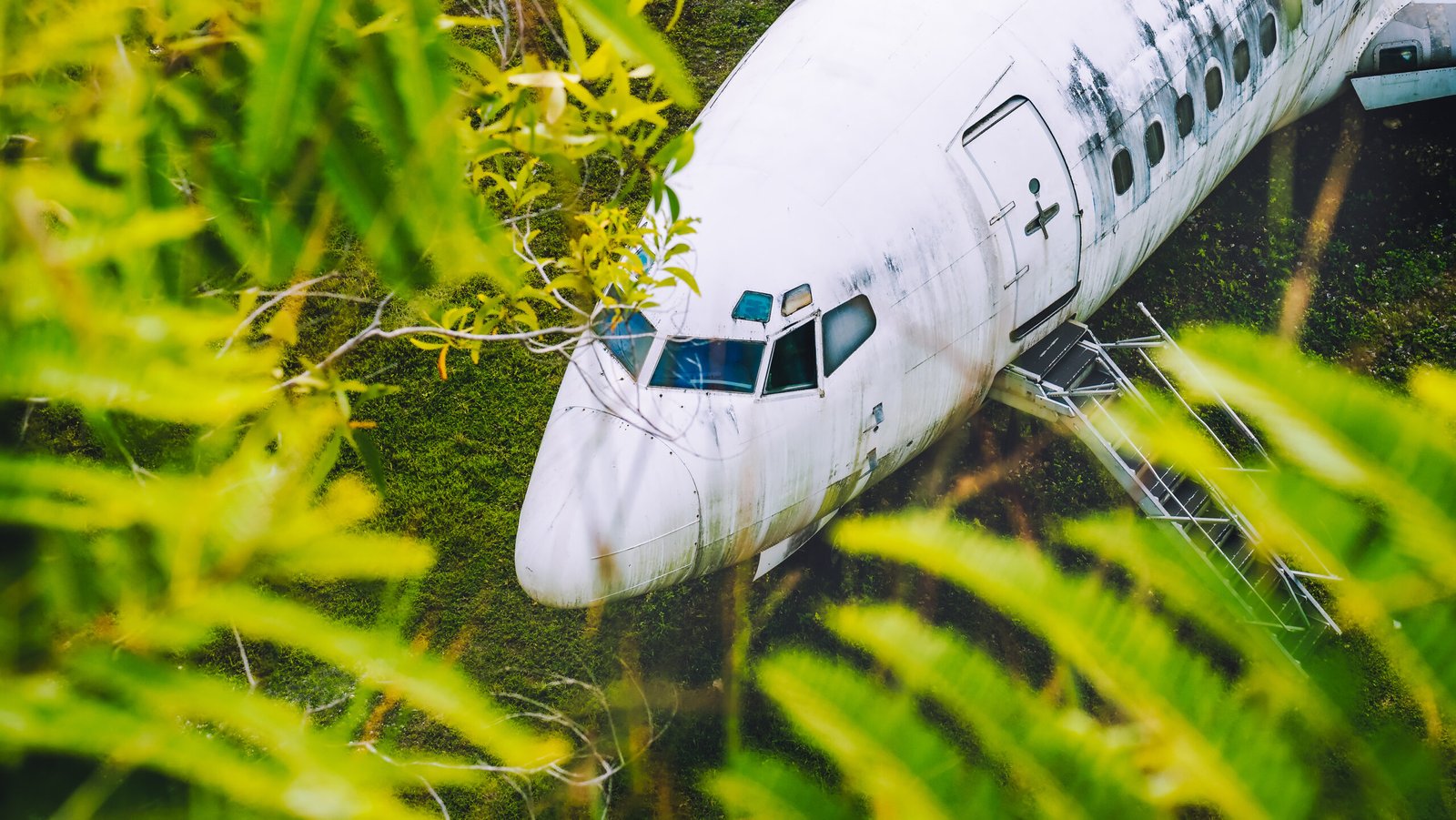Wright Brothers
From Wright to Flight: A Journey Through Aviation History
Aviation has come a long way since the Wright brothers took their first powered flight in 1903. Today, technology has transformed how we learn, train, and operate within this dynamic field. The evolution of aviation is not just a story of aircraft; it’s also about the tools and resources that have shaped the industry.
One of the most significant advancements in aviation training is the use of flight simulators. These sophisticated devices replicate real-world flying conditions while keeping costs down and safety at the forefront. Simulators allow aspiring pilots to practice takeoffs, landings, and emergency situations without ever leaving the ground. Institutions worldwide are implementing these high-tech solutions into their curricula, making training more accessible and efficient.
For those looking to dive deeper into aviation knowledge or connect with enthusiasts, numerous blogs, websites, and social media platforms cater to all facets of this field. Websites like Airliners.net and FlightAware offer insights into flight tracking and airline operations while forums such as PPRuNe (Professional Pilots Rumour Network) provide a platform for pilots to exchange experiences and advice. Social media channels on platforms like Instagram feature stunning aerial photography alongside accounts dedicated to sharing news updates in aviation. Twitter also serves as an excellent resource for staying informed with breaking news from major airlines or regulatory bodies.

Online aviation courses have gained popularity in recent years, offering flexibility for those seeking to enhance their skills or pivot careers entirely. Ground schools provide foundational knowledge for aspiring pilots, covering essential topics such as navigation and meteorology. Institutions like Embry-Riddle Aeronautical University offer comprehensive online programs tailored for various levels—ranging from private pilot licenses to advanced degrees in aeronautics. With so many options available online, anyone can find a course that suits their schedule and learning style.
The demand for qualified pilots continues to soar globally; thus, job opportunities abound within this field. Airlines are actively seeking skilled individuals who possess both technical expertise and interpersonal abilities to excel in customer service roles as well as command positions in the cockpit. Platforms like PilotCareerCenter.com list job openings while providing guidance on resume-building tailored specifically for aviators.
Additionally, the rise of drones represents another exciting chapter in aviation history. Once limited primarily to military applications, drones are now utilized across various sectors—from agriculture monitoring to aerial photography—and their use is expected only to increase. As regulations evolve under organizations like the FAA (Federal Aviation Administration), individuals interested in drone piloting must stay informed about licensing requirements and safety guidelines through official FAA links such as FAA.gov/uas.
Navigating through this expansive world requires access to reliable resources; luckily today’s tech-savvy society provides ample tools at our fingertips. Whether you’re an aspiring pilot exploring online courses or simply someone fascinated by what lies above us—the sky’s no longer the limit! Embracing these innovations offers endless possibilities not just for career paths but also for hobbyists eager to take part in this captivating journey through time—a journey fueled by human curiosity and technological advancement that traces back over a century ago when two brothers dared dream big!

The Evolution of Flight: From the Wright Brothers to Modern Air Travel
The story of aviation is a tale rich with innovation, determination, and dreams soaring through the clouds. It all began over a century ago when Orville and Wilbur Wright achieved what many deemed impossible: they took flight. Their pioneering spirit laid the foundation for modern air travel, setting off an evolution that has transformed the skies into bustling highways filled with commercial jets and unmanned drones alike.
Today, technology plays an integral role in aviation training. Gone are the days when aspiring pilots relied solely on books and flight instructors to learn their craft. Enter simulators—sophisticated virtual environments that mimic real-life flying conditions with astounding accuracy. These high-tech tools allow students to experience everything from routine maneuvers to emergency situations without leaving the ground. By honing their skills in a controlled setting, future aviators can build confidence and refine their techniques before taking to the sky.
For those eager to dive deeper into aviation knowledge, numerous resources abound online. A plethora of blogs and websites cater to aviation enthusiasts and professionals alike. Some notable mentions include:
1. **Airways Magazine** – A comprehensive source for news, reviews, and insights about airlines worldwide.
2. **FlightGlobal** – Offers detailed analyses of current trends in aviation technology.
3. **Pilot’s Discretion** – A blog dedicated to sharing pilot experiences and tips.
4. **AvGeekery** – Focused on celebrating all things related to airplanes and flying.
Social media platforms also serve as vibrant hubs for aviators seeking community engagement or industry updates. Twitter accounts like @AviationWeek provide instant news flashes, while Instagram showcases breathtaking aerial photography from both hobbyists and professionals.
Moreover, numerous online courses have emerged, enabling aspiring pilots or enthusiasts to obtain essential knowledge remotely. Ground schools are now accessible from anywhere in the world; institutions such as King Schools offer comprehensive programs covering everything from FAA regulations to advanced navigation techniques. Platforms like Coursera even host courses pertaining not just to piloting but also aircraft maintenance, air traffic control management, and aerospace engineering.
As interest in aviation continues growing, job opportunities in this field expand alongside it. While becoming a pilot remains one of the most sought-after career paths—requiring dedication and extensive training—other roles like air traffic controller or flight engineer also promise rewarding careers within this dynamic industry.
In recent years, another revolution has taken flight—the rise of drones! Once seen merely as toys or gadgets for hobbyists, drones have rapidly evolved into critical tools used across various sectors including agriculture, real estate, search-and-rescue operations, and delivery services. This advancement has prompted regulatory bodies such as the Federal Aviation Administration (FAA) to establish guidelines ensuring responsible drone usage while promoting safety standards.
Navigating these regulations can be daunting; however, valuable resources are available through official FAA links that clarify licensing requirements for drone operators alongside best practices for safe flying.
Modern air travel stands on the shoulders of giants—the Wright brothers’ legacy is evident today more than ever as we witness remarkable advancements in technology reshaping our skies daily. With innovative training methods paving pathways for new pilots while integrating drones into our lives seamlessly signifies only one thing: The sky isn’t just a limit; it’s an open invitation awaiting exploration!

The Evolution of Aviation: From Wright Flyers to Modern Jets
Aviation has come a long way since the Wright brothers took to the skies in 1903 with their iconic Flyer. Today, we find ourselves in an exhilarating era where technology and innovation are reshaping how we fly, learn, and explore the vast expanse of our skies. As we delve into this evolution, let’s explore online aviation courses, career opportunities for pilots, the rise of drones, and the vital role of technology in training.
With the convenience of digital education, aspiring aviators can now enroll in various online aviation courses. These platforms offer flexible learning schedules that cater to busy individuals who aspire to soar through the clouds. Ground schools have also taken a leap forward; combining traditional classroom teachings with interactive e-learning modules allows students to grasp complex concepts quickly. The comprehensive curriculum covers everything from aerodynamics to regulations set forth by the Federal Aviation Administration (FAA), preparing students for real-world challenges.

Once grounded knowledge is achieved, many dreamers transition into thrilling careers as pilots. The job market for pilots has seen fluctuations over recent years but remains vibrant due to increasing demand from airlines and cargo companies. According to industry forecasts, more than 700,000 pilots will be needed globally within the next two decades! This robust demand offers a wealth of opportunities—from commercial airline operations to specialized fields like agricultural aviation or aerial firefighting.
Equally fascinating is the emergence of drones—a game changer in both recreational and professional spheres. Unmanned Aerial Vehicles (UAVs) have transformed industries such as delivery services, agriculture monitoring, and even cinematography. With developments advancing at lightning speed, FAA regulations around drone usage are evolving too. Pilots looking to operate drones commercially must obtain a Remote Pilot Certificate which ensures that safety protocols are upheld in increasingly crowded airspace.
For those seeking insights into this dynamic world of aviation beyond formal education and jobs, numerous blogs and websites serve as excellent resources. Some popular choices include “Airline Reporter,” which provides updates on airline news; “Flight Global,” offering industry analysis; or “AOPA” (Aircraft Owners and Pilots Association), which supports general aviation enthusiasts with news and advocacy efforts. On social media platforms like Instagram or Twitter, hashtags such as #aviationlovers or #pilotlife connect enthusiasts worldwide—sharing breathtaking photos and stories that inspire new generations of aviators.
As technology continues its relentless march forward, so does training methodology within aviation. Flight simulators have become indispensable tools for pilot training programs across various levels—offering realistic experiences without leaving solid ground. These advanced simulators replicate flight conditions accurately while enabling trainees to practice emergency procedures safely—a crucial aspect when preparing them for actual flights.
In summary, the evolution of aviation is not only about moving from wooden biplanes to sleek jets but also reflects a profound shift in education methods and career pathways available today. Online courses make learning accessible; ground schools blend tradition with modernity; drones redefine roles within aviation; while blogs unite passionate individuals eager to share their love for flying—all underscored by cutting-edge training technologies like simulators that ensure preparedness for whatever skies await ahead! Whether you’re dreaming of becoming a pilot or simply captivated by aircraft flying overhead—this ever-evolving narrative continues unfolding before our eyes!



